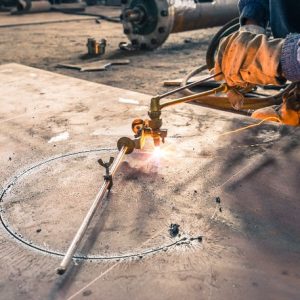How to Operate a Manual Pallet Truck
Manual pallet trucks use a hydraulic pump and handle to maneuver and lift loads. They are available in manual and electric versions.
The basic design of these pallet trucks makes them suitable for many types of pallets and can be purchased with varying fork dimensions to fit specific applications. They minimize the need for heavy-lifting by human staff and help reduce worker fatigue.
Handle
The handle of a manual pallet truck serves as the pumping and lifting mechanism. To drive a pallet truck you push down on the rounded lever in the middle of the handle that also functions as a pumping handle. When a load needs to be elevated you lift the handle and slide the forks under a skid or pallet. Once the prongs are underneath a pallet, you pump the handle again to raise them off the ground.
A variety of features are available for manual pallet trucks to suit various material handling plant applications. For example, some models come with a built-in scale that makes it easy to weigh a pallet of freight. Other options include galvanized or stainless steel pallet trucks, which are ideal for cold and wet environments, or heavy-duty versions that are made to withstand frequent use in demanding conditions.
When using a hand pallet truck, be sure to park it out of traffic areas with the forks in the up position. Never travel down a slope with the forks lowered, and maneuver the truck at a steady controllable speed to prevent accidents.
Hydraulic Pump
A hydraulic pump is used to transmit and control the energy that moving fluids under pressure have the ability to generate. In other words, it converts mechanical power into hydraulic energy to drive the machine’s components.
Hydraulic systems are used in a wide range of contexts such as construction, excavation, automobile manufacturing, farming, military contracting, and consumer utilities. These systems use hydraulic pumps that direct hydraulic liquid to industrial machinery like elevators and farm equipment.
These hydraulic pumps are made with long-lasting materials, and the fluid they use is often petroleum-based or synthetic. The type of fluid you choose depends on the environment and application; synthetic hydraulic fluids are better suited to harsh environments that require high temperatures and pressures, but they’re typically more expensive.
You can recognize when your hydraulic pump is showing signs of wear by listening to it; if you hear rattling, grinding Manual pallet truck or scrubbing, it’s time for a tune up. These sounds are a sign that parts are loosening up, which can quickly lead to Manual pallet truck more serious issues. Another warning sign is a rise in pump temperature. This is a sign that the system is overworking itself and is generating excess heat, which can damage internal parts and create cavitation within the pump.
Steer Wheels
Located below the hydraulic pump and handle, the steer wheels of the pallet truck allow you to maneuver in tight spaces. They can be made of polyurethane, nylon, or hard rubber and are designed to work on a variety of floor surfaces. Depending on the application, you may also prefer a galvanized or full stainless steel model that meets food industry standards and is resistant to cleaning solutions.
As you move the lever in one of the three positions, the forks raise and lower automatically. If the lever is in the lowest position, pushing forward on it causes the forks to lower into the load; raising the handle moves the forks up into a raised position, and squeezing the lever puts the jack in its lowered position.
Rough terrain manual pallet trucks, as their name suggests, are built to move over rough ground that is too difficult for standard trucks to travel over. Using these pallet trucks on tough outdoor conditions streamlines your materials handling operations, prevents injuries among staff, and maximizes the return on investment of your equipment.
Forks or Prongs
In order to lift and move cargo, the forks or prongs on a pallet truck must be lowered into the gaps between the pallet boards. The tiller-like handle is then used to pump the hydraulic jack to raise the forks up. This allows the operator to maneuver a load onto and off of pallets and up and down stairs.
Once you have positioned the load, put the control lever into the down position and use it to lower the forks. Place the pallet jack’s forks into the gaps of the pallet stringers and make sure they are lined up properly to avoid damaging the cargo. If you are moving a lot of different sizes of loads, consider using a low-profile pallet truck that has forks that are only 2” off the ground.
Remember to always steer the pallet jack while it’s in motion by steering it with your feet and moving slowly. Injuries often occur when a person moves too quickly or makes sharp turns. If you’re traveling up an incline, slow down and walk the hand pallet truck to prevent it from rolling.
Control Lever
The operating lever on a manual pallet truck is what activates the lifting hydraulics. When the operating lever is pushed into the “lift” position it closes a lowering valve and forces hydraulic oil into the lift cylinder. This enables the pallet truck to lift regardless of load weight.
When the control lever is pumped up, it causes a piston in the hydraulic pump to rise, and this movement actuates a set of linkages beneath the forks attached to the load wheels to raise. When the handle is pulled back down, this actuates a different pair of linkages to lower the forks.
To move a load, push the pallet truck forks into the fork openings of a pallet and then pump the handle to raise the forks about an inch off the ground. Then, move the pallet jack to the next load and repeat the process of pushing the forks into the pallet’s fork openings and then raising them off of the ground. When the forks are not being used, slip the control lever into the neutral position and remove them from the pallet.





